2. Polack FP, Thomas SJ, Kitchin N, Absalon J, Gurtman A, Lockhart S, et al. Safety and efficacy of the BNT162b2 mRNA COVID-19 vaccine. N Engl J Med. 2020; 383(27):2603–2615. PMID:
33301246.

3. Baden LR, El Sahly HM, Essink B, Kotloff K, Frey S, Novak R, et al. Efficacy and safety of the mRNA-1273 SARS-CoV-2 vaccine. N Engl J Med. 2021; 384(5):403–416. PMID:
33378609.

5. Pardi N, Hogan MJ, Porter FW, Weissman D. mRNA vaccines - a new era in vaccinology. Nat Rev Drug Discov. 2018; 17(4):261–279. PMID:
29326426.

7. Barda N, Dagan N, Ben-Shlomo Y, Kepten E, Waxman J, Ohana R, et al. Safety of the BNT162b2 mRNA COVID-19 vaccine in a nationwide setting. N Engl J Med. 2021; 385(12):1078–1090. PMID:
34432976.

8. Chen G, Li X, Sun M, Zhou Y, Yin M, Zhao B, et al. COVID-19 mRNA vaccines are generally safe in the short term: a vaccine vigilance real-world study says. Front Immunol. 2021; 12:669010. PMID:
34093567.

9. Menni C, Klaser K, May A, Polidori L, Capdevila J, Louca P, et al. Vaccine side-effects and SARS-CoV-2 infection after vaccination in users of the COVID Symptom Study app in the UK: a prospective observational study. Lancet Infect Dis. 2021; 21(7):939–949. PMID:
33930320.

10. Beatty AL, Peyser ND, Butcher XE, Cocohoba JM, Lin F, Olgin JE, et al. Analysis of COVID-19 vaccine type and adverse effects following vaccination. JAMA Netw Open. 2021; 4(12):e2140364. PMID:
34935921.

11. Choi YY, Kim MK, Kwon HC, Kim GH. Safety monitoring after the BNT162b2 COVID-19 vaccine among adults aged 75 years or older. J Korean Med Sci. 2021; 36(45):e318. PMID:
34811980.

12. Kwon Y, Hwang I, Ko M, Kim H, Kim S, Seo SY, et al. Self-reported adverse events following the second dose of COVID-19 Vaccines in the Republic of KOREA: recipient survey, February to December 2021. Epidemiol Health. 2022; e2023006. PMID:
37183320.

14. WHO Expert Consultation. Appropriate body-mass index for Asian populations and its implications for policy and intervention strategies. Lancet. 2004; 363(9403):157–163. PMID:
14726171.
15. Pitt SC, Schwartz TA, Chu D. AAPOR reporting guidelines for survey studies. JAMA Surg. 2021; 156(8):785–786. PMID:
33825811.

16. Klein NP, Lewis N, Goddard K, Fireman B, Zerbo O, Hanson KE, et al. Surveillance for adverse events after COVID-19 mRNA vaccination. JAMA. 2021; 326(14):1390–1399. PMID:
34477808.

17. Hwang I, Park K, Kim TE, Kwon Y, Lee YK. COVID-19 vaccine safety monitoring in Republic of Korea from February 26, 2021 to October 31, 2021. Osong Public Health Res Perspect. 2021; 12(6):396–402. PMID:
34965689.

18. Kitagawa H, Kaiki Y, Sugiyama A, Nagashima S, Kurisu A, Nomura T, et al. Adverse reactions to the BNT162b2 and mRNA-1273 mRNA COVID-19 vaccines in Japan. J Infect Chemother. 2022; 28(4):576–581. PMID:
35058126.

19. Valera-Rubio MM, Sierra-Torres MI, Castillejo García RR, Cordero-Ramos JJ, López-Márquez MR, Cruz-Salgado ÓO, et al. Adverse events reported after administration of BNT162b2 and mRNA-1273 COVID-19 vaccines among hospital workers: a cross-sectional survey-based study in a Spanish hospital. Expert Rev Vaccines. 2022; 21(4):533–540. PMID:
34986076.

20. Chapin-Bardales J, Gee J, Myers T. Reactogenicity following receipt of mRNA-based COVID-19 vaccines. JAMA. 2021; 325(21):2201–2202. PMID:
33818592.

21. Borobia AM, Carcas AJ, Pérez-Olmeda M, Castaño L, Bertran MJ, García-Pérez J, et al. Immunogenicity and reactogenicity of BNT162b2 booster in ChAdOx1-S-primed participants (CombiVacS): a multicentre, open-label, randomised, controlled, phase 2 trial. Lancet. 2021; 398(10295):121–130. PMID:
34181880.
22. Hillus D, Schwarz T, Tober-Lau P, Vanshylla K, Hastor H, Thibeault C, et al. Safety, reactogenicity, and immunogenicity of homologous and heterologous prime-boost immunisation with ChAdOx1 nCoV-19 and BNT162b2: a prospective cohort study. Lancet Respir Med. 2021; 9(11):1255–1265. PMID:
34391547.

23. Liu X, Shaw RH, Stuart AS, Greenland M, Aley PK, Andrews NJ, et al. Safety and immunogenicity of heterologous versus homologous prime-boost schedules with an adenoviral vectored and mRNA COVID-19 vaccine (Com-COV): a single-blind, randomised, non-inferiority trial. Lancet. 2021; 398(10303):856–869. PMID:
34370971.
24. Parés-Badell O, Martínez-Gómez X, Pinós L, Borras-Bermejo B, Uriona S, Otero-Romero S, et al. Local and systemic adverse reactions to mRNA COVID-19 vaccines comparing two vaccine types and occurrence of previous COVID-19 infection. Vaccines (Basel). 2021; 9(12):1463. PMID:
34960209.

25. Green MS, Peer V, Magid A, Hagani N, Anis E, Nitzan D. Gender differences in adverse events following the Pfizer-BioNTech COVID-19 vaccine. Vaccines (Basel). 2022; 10(2):233. PMID:
35214694.

26. Edelman A, Boniface ER, Benhar E, Han L, Matteson KA, Favaro C, et al. Association between menstrual cycle length and coronavirus disease 2019 (COVID-19) vaccination: A U.S. Cohort. Obstet Gynecol. 2022; 139(4):481–489. PMID:
34991109.

27. Tissot N, Brunel AS, Bozon F, Rosolen B, Chirouze C, Bouiller K. Patients with history of COVID-19 had more side effects after the first dose of COVID-19 vaccine. Vaccine. 2021; 39(36):5087–5090. PMID:
34332800.

28. Baldolli A, Michon J, Appia F, Galimard C, Verdon R, Parienti JJ. Tolerance of BNT162b2 mRNA COVI-19 vaccine in patients with a medical history of COVID-19 disease: a case control study. Vaccine. 2021; 39(32):4410–4413. PMID:
34210574.

29. Jeong JY, Han KH. Common Skin Diseases in Korea. Seoul, Korea: MDworld;2009.
30. Imai K, Tanaka F, Kawano S, Esaki K, Arakawa J, Nishiyama T, et al. Incidence and risk factors of immediate hypersensitivity reactions and immunization stress-related responses with COVID-19 mRNA vaccine. J Allergy Clin Immunol Pract. 2022; 10(10):2667–2676.E10. PMID:
35953016.

31. Dages KN, Pitlick MM, Joshi AY, Park MA. Risk of allergic reaction in patients with atopic disease and recent coronavirus disease 2019 vaccination. Ann Allergy Asthma Immunol. 2021; 127(2):257–258. PMID:
33962029.

32. Heratizadeh A, Wichmann K, Werfel T. Food allergy and atopic dermatitis: how are they connected? Curr Allergy Asthma Rep. 2011; 11(4):284–291. PMID:
21614611.

33. Li L, Robinson LB, Patel R, Landman AB, Fu X, Shenoy ES, et al. Association of self-reported high-risk allergy history with allergy symptoms after COVID-19 vaccination. JAMA Netw Open. 2021; 4(10):e2131034. PMID:
34698847.

34. Visser C, Biedermann JS, Nierman MC, van der Meer FJ, Gulpen AJ, Moors YC, et al. The immediate effect of COVID-19 vaccination on anticoagulation control in patients using vitamin K antagonists. Thromb Haemost. 2022; 122(3):377–385. PMID:
35245945.

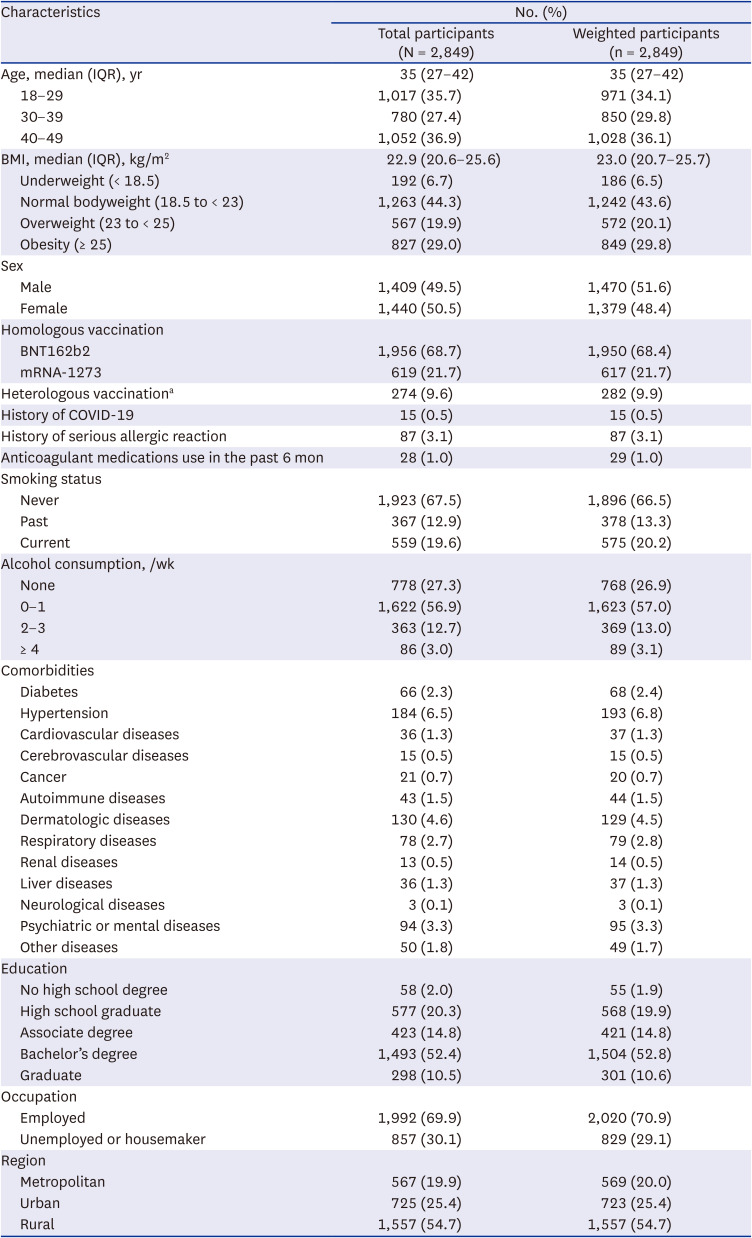
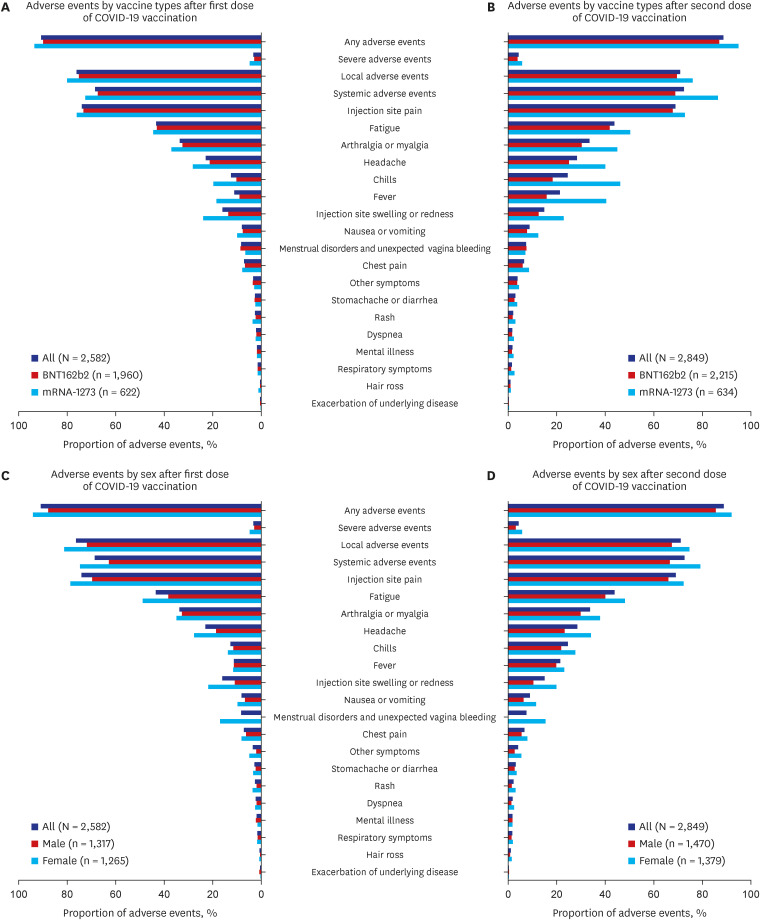
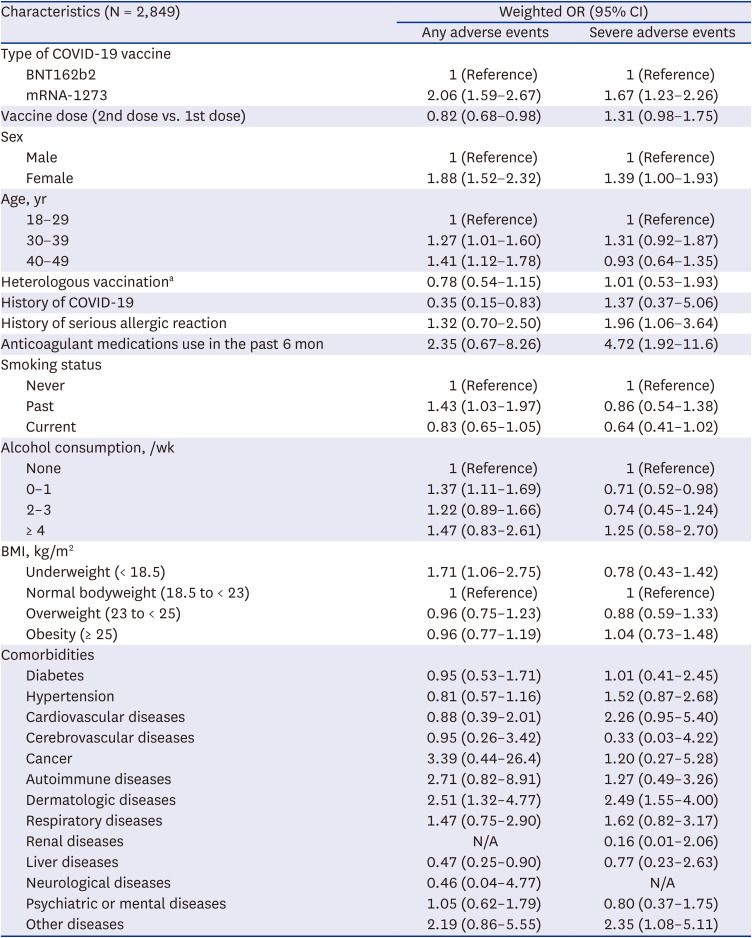
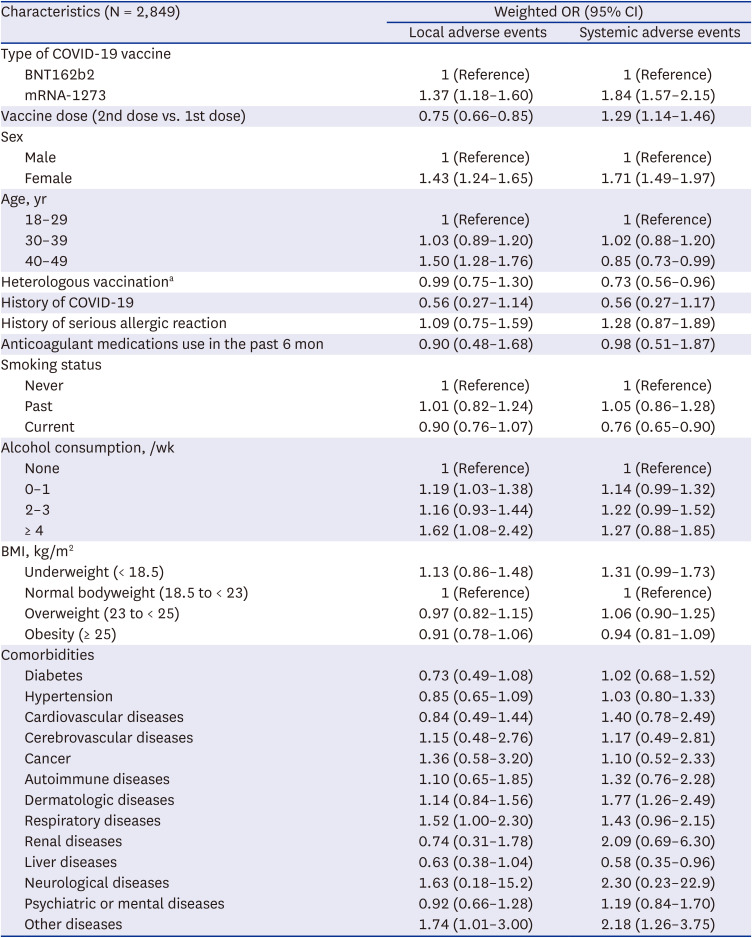




 PDF
PDF Citation
Citation Print
Print



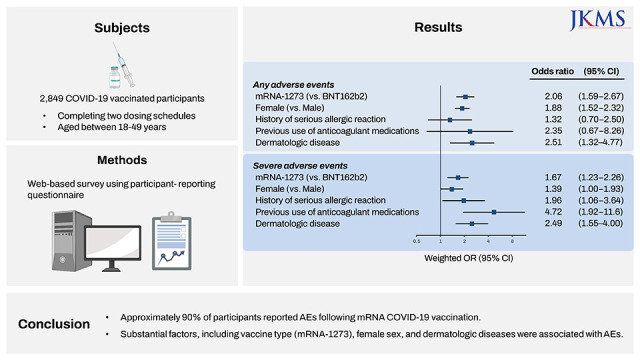

 XML Download
XML Download